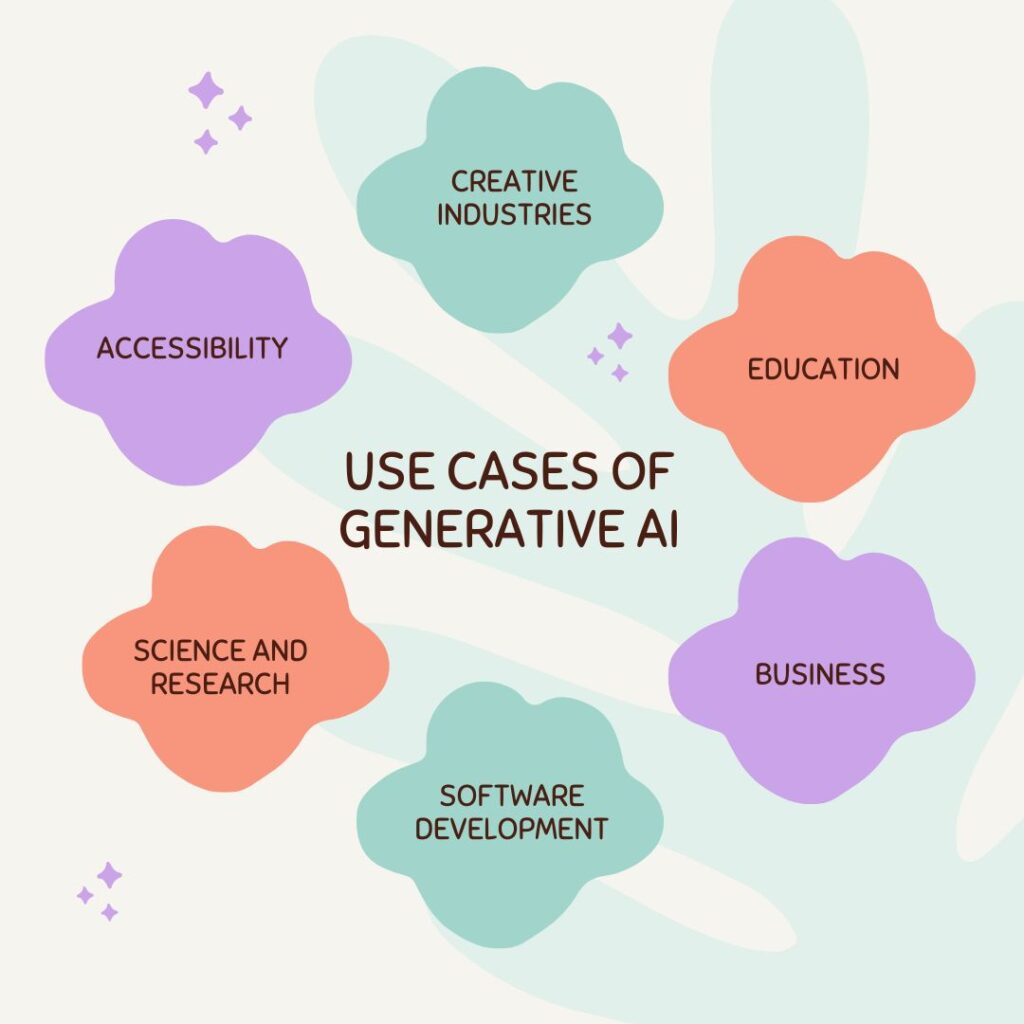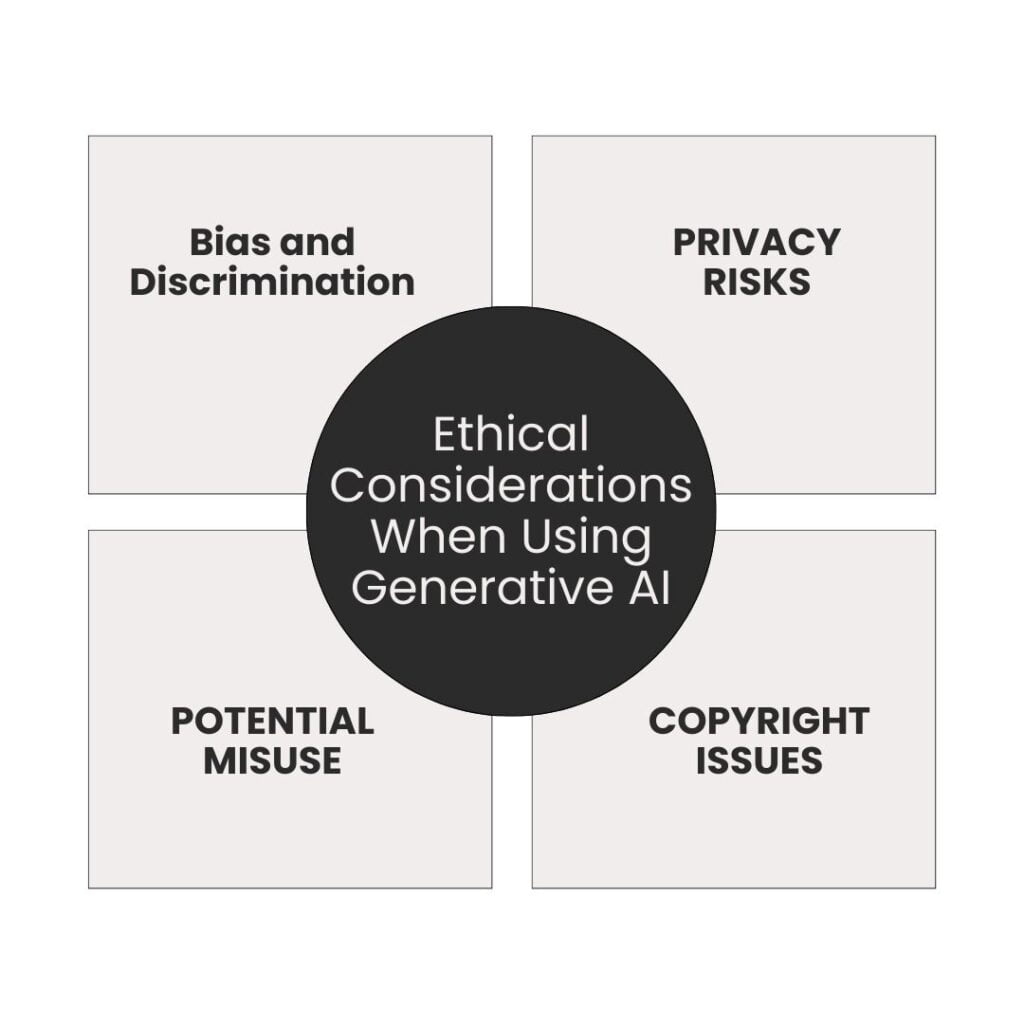Imagine having a digital assistant that can create videos, write essays, code programs, and more just by writing the text that you want. That’s the power of generative AI. While this technology evolving it also raises important ethical concerns.
Bias, misinformation, privacy, and ownership of created content are some ethical considerations when using generative AI.
In this blog post, we will explore what are some ethical considerations when using generative AI and also explore real-life examples of it.
Table of Contents
- Understanding Generative AI
- Use Cases of Generative AI
- What are some Ethical Considerations When Using Generative AI
- Real-Life Examples of Ethical Generative AI
- Conclusion
Understanding Generative AI

Generative AI refers to artificial intelligence that can generate new content like text, images, code, and more. When you give a prompt, it can then generate entirely new content by intelligently combining and recombining what it has learned in novel ways.
For example, a text-generation AI could generate new stories, scripts, or marketing copy from scratch. Rather than simply analyzing existing data, generative AI leverages deep learning techniques to create brand-new artificial outputs. This unlocks powerful capabilities but also raises ethical considerations around potential misuse that must be addressed.
Use Cases of Generative AI

Generative AI has applications across multiple industries. Here are some of the key use cases of generative AI:
Creative Industries
- Generating images, artwork, music, videos.
- Creating logos, marketing videos, and product descriptions.
- Automating creative tasks on demand.
Education
- Personalized learning materials for students.
- Generating practice questions and exercises.
- Coding educational software and simulations.
Business
- Drafting reports, emails, presentations.
- Creating content like blogs, and whitepapers.
- Streamlining content production workflows.
Software Development
- AI code generation for rapid prototyping.
- Automating repetitive coding tasks.
- Assisting with testing and debugging.
Science and Research
- Molecular and material design.
- Running AI-powered simulations.
- Enhancing scientific analysis capabilities.
Accessibility
- Generating image descriptions for the visually impaired.
- Automated captioning and transcripts.
The possibilities go beyond this list, it can make new content for almost anything. But because it’s so powerful, we need to think about how to use it responsibly. We have to be careful about the ethical issues that might come up when we use it.
What are some Ethical Considerations When Using Generative AI

Here are some key ethical considerations when using generative AI:
Bias and Discrimination
- Generative AI models can pick up biases from the data they were trained on.
- This could lead to AI outputs promoting harmful stereotypes or discrimination.
- It’s crucial to use diverse, inclusive training data to reduce bias.
Privacy Risks
- Generative AI requires large datasets, which may contain personal information.
- There’s a risk that people’s data could be used without them knowing.
- AI companies must be transparent about their data sources and usage.
Potential Misuse
- Powerful generative AI tools could be misused to create misinformation, hate speech, etc.
- We must stop this by making rules and systems to keep AI safe and fair.
- Safeguards are needed to prevent misuse and promote responsible deployment.
Copyright Issues
- AI-generated content could violate intellectual property and copyright laws.
- There are unresolved questions about who owns the rights to AI outputs.
- Updated policies are likely needed to address IP concerns with generative AI.
Overall, we need to be careful with generative AI. If we’re not, it could cause problems in real life. We have to make sure we use it in ways that are fair and safe for everyone.
Real-Life Examples of Ethical Generative AI
As we have seen the ethical considerations when using generative AI, now here are some real-life examples of ethical generative AI:
DALL-E From OpenAI
DALL-E is an AI that makes pictures, and OpenAI makes it. To keep it fair, the team cleaned up the data it learned from. They removed stuff like hate speech and bad images. They’re also honest about what DALL-E can and can’t do. And they put safety features in place so it won’t make any harmful images.
AI Code Assistants
Big companies like Amazon, Google, and Microsoft have AI helpers for coding. These helpers learn from lots of open-source code. But they’re careful not to just copy the code exactly. They give suggestions to help programmers, without taking credit for their work.
CI’AN AI Art Tool
In South Korea, researchers made an AI tool called CI’AN for making art. They made sure to use only art that was free to use in their training. This way, they don’t break any copyright laws.
CI’AN also has filters to stop it from making bad or rude art. It helps artists make new art that’s inspired by different styles, but it doesn’t copy them exactly.
These examples show how people are thinking about ethics when they make AI. They’re making sure it’s safe, fair, and helpful. By doing this, they hope to make the most out of AI while keeping everyone safe.
Conclusion
In conclusion, as generative AI gets better, it’s super important to think about ethics right from the start. We need to tackle issues like biases, privacy, misuse, and respecting people’s rights to their work. By building ethics into the very heart of these systems, we can make sure they’re safe and fair. This means working together with different experts, having strong rules in place, and talking openly about these issues. With everyone’s input, we can make sure that generative AI helps everyone and doesn’t cause harm.


4 thoughts on “What are Ethical Considerations When Using Generative AI?”